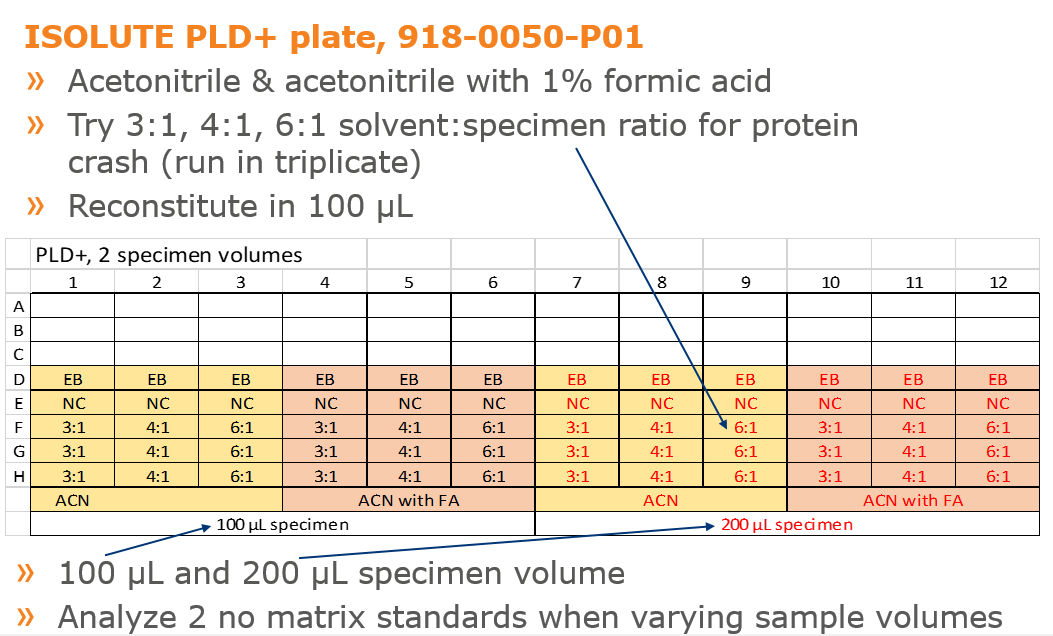This is a question that I am often asked by very smart people that just haven’t had time to learn the process. An optimized sample preparation method is critical for an accurate, specific, robust clinical LC-MS/MS assay. A good sample prep method can improve accuracy and precision, provide longer LC column lifetime, and keep your LC-MS/MS system clean.
Once the LC and MS/MS conditions for the compounds of interest are optimized, and method parameters like desired LOQ/LOD, analytical measurement range and specimen volume used for analysis have been established, sample prep method development can begin.
There are many things to consider when developing a sample prep method:
- -Do I want minimal clean up or a more specific extraction technique?
- -What interferences are specific to my matrix that I need to be concerned about?
- -What type of sample pretreatment do I need to get the best results from my sample prep?
I use a system called plate mapping to design my experiments. It allows me to systematically test different ranges or variables to optimize an extraction, scout a single variable or many at a time, and save time by generating data on multiple variables at once.
Let’s look at a quick example: a basic drug in plasma.
The drug has a molecular weight of 300 amu, and has an amine attached to aromatic ring. The logP is 4.5, and the pKa of the amine is 8.2. Desired LOQ is 2 ng/mL, and desired specimen volume is 100 – 200 µL of plasma, and I want to do minimal clean up.
Minimal cleanup can be accomplished with a phospholipid depletion/protein removal plate like Biotage ISOLUTE PLD+. According to the package directions, we add acetonitrile to each well of the plate, and then add sample, mix, and elute. Variables are the addition of 1% formic acid to the acetonitrile, and to vary the acetonitrile:specimen ratio.
I would design a plate map that looks like this:

Samples are run in triplicate at 5-10 times the desired LOQ. In this experiment, we are evaluating 2 different specimen volumes (100 and 200 µL), three different solvent:specimen ratios (3:1, 4:1 and 6:1) and samples analyzed with and without formic acid.
I also analyze an extraction blank, and a negative control (drug free plasma) for each set of conditions. I would also analyze a no matrix control (unextracted control) at the same concentration to assess process efficiency. The best option is determined by looking at average area counts and signal:noise for each set of conditions.
Biotage has presented a one-day seminar in April and May 2019 on how to do systematic sample prep method development for clinical LC-MS/MS assays. If you’d like to learn more, watch the recording of the event clicking on the button below:

 Organic Workflow
Organic Workflow Peptide Workflow
Peptide Workflow Scale-Up Flash Purification
Scale-Up Flash Purification  Sample Preparation
Sample Preparation Biomolecule Purification
Biomolecule Purification Oligo synthesis
Oligo synthesis Scavengers and Reagents
Scavengers and Reagents Service & Support
Service & Support Accessories & Spare parts
Accessories & Spare parts Investors
Investors Reports & News
Reports & News The Share
The Share Corporate Governance
Corporate Governance Calendar
Calendar Sustainability
Sustainability Our Offering
Our Offering Our History
Our History Our Locations
Our Locations Leadership
Leadership